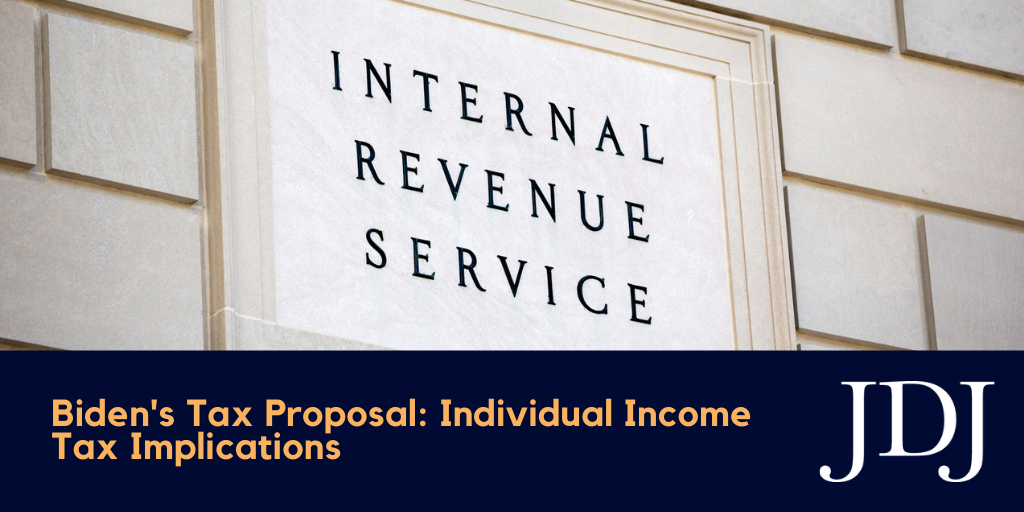Biden Tax Proposal: Individual Income Tax Implications

On September 13, the House Ways and Means Committee released its initial proposal for tax changes under President Biden’s administration. The tax bill is designed to raise revenue for Biden’s $3.5 trillion dollar infrastructure package, which aims to support human infrastructure components such as national paid leave programs, extended Medicare, education, and climate policy. Negotiations are still taking place, so the final contents of the bill are unknown, but the impact of this legislation on high net worth individuals could be significant.
This article is the first in a 3-part series designed to outline the key points of the proposed legislation that should be considered for year-end tax planning purposes in 2021:
- Individual Income Tax Implications
- Retirement Planning Implications
- Estate Planning Implications
Today, we’ll focus on the individual income tax implications for high-net-worth (HNW) individuals. Most of these provisions would go into effect on January 1, 2022, unless otherwise noted. Please note that this is a fluid situation, and final regulations could differ from the below once the Senate introduces their proposal and President Biden signs the final bill.
- Increase in the top ordinary income rate from 37.0% to 39.6%
- This rate would apply to married individuals filing jointly with taxable income over $450,000, heads of households with taxable income over $425,000, and single filers with taxable income over $400,000.
- Increase in the top capital gains tax rate from 20% to 25%
- This does NOT apply to anyone with taxable income less than $400,000 (if single) or $450,000 (if married filing jointly).
- This increase would be effective as of the date of the proposal (i.e., September 13, 2021).
- Additionally, the holding period for carried interests to qualify for long-term capital gains treatment would be extended from three years to five years
- Expansion of the 3.8% Net Investment Income Tax (NIIT)
- In addition to investment earnings and passive income (under the current law), the net investment income tax would also apply to net business income for taxpayers with taxable income greater than $400,000 (single) or $500,000 (joint).
- Effectively, this also brings the top capital gains tax rate to 28.8% for high-income earners.
- Additional 3% tax “surcharge” for adjusted gross income in excess of $5,000,000 for joint, single, and head-of-household individual taxpayers ($2,500,000 if married filing separately).
- In effect, a high-income individual’s effective tax rate could be up to 46.4% (39.6% highest tax bracket + 3.8% NIIT + 3% surcharge).
- Planning Considerations: High-income taxpayers should review with their tax advisor and consider whether capital gains and/or income can be accelerated into the current year to take advantage of lower tax rates, or whether capital losses and/or deductions (e.g., charitable contributions) can be deferred to future years to offset higher tax rates.
- Elimination of the 75% and 100% gain exclusions for Qualified Small Business Stock (QSBS) for the following (i.e., these taxpayers would only be able to exclude a maximum of 50% of capital gains from QSBS):
- Individual owners of QSBS with adjusted gross income over $400,000
- Trusts or estates that own QSBS
- This treatment would apply to sales on or after the date of the proposal (i.e., September 13, 2021).
- See previous blog post here for further explanation on the QSBS rules.
Because individual situations vary in terms of structure and complexity when it comes to tax planning, it is important to work with qualified advisors and tax professionals to evaluate and develop an appropriate strategy. Please contact a member of your JDJ team for assistance.



















